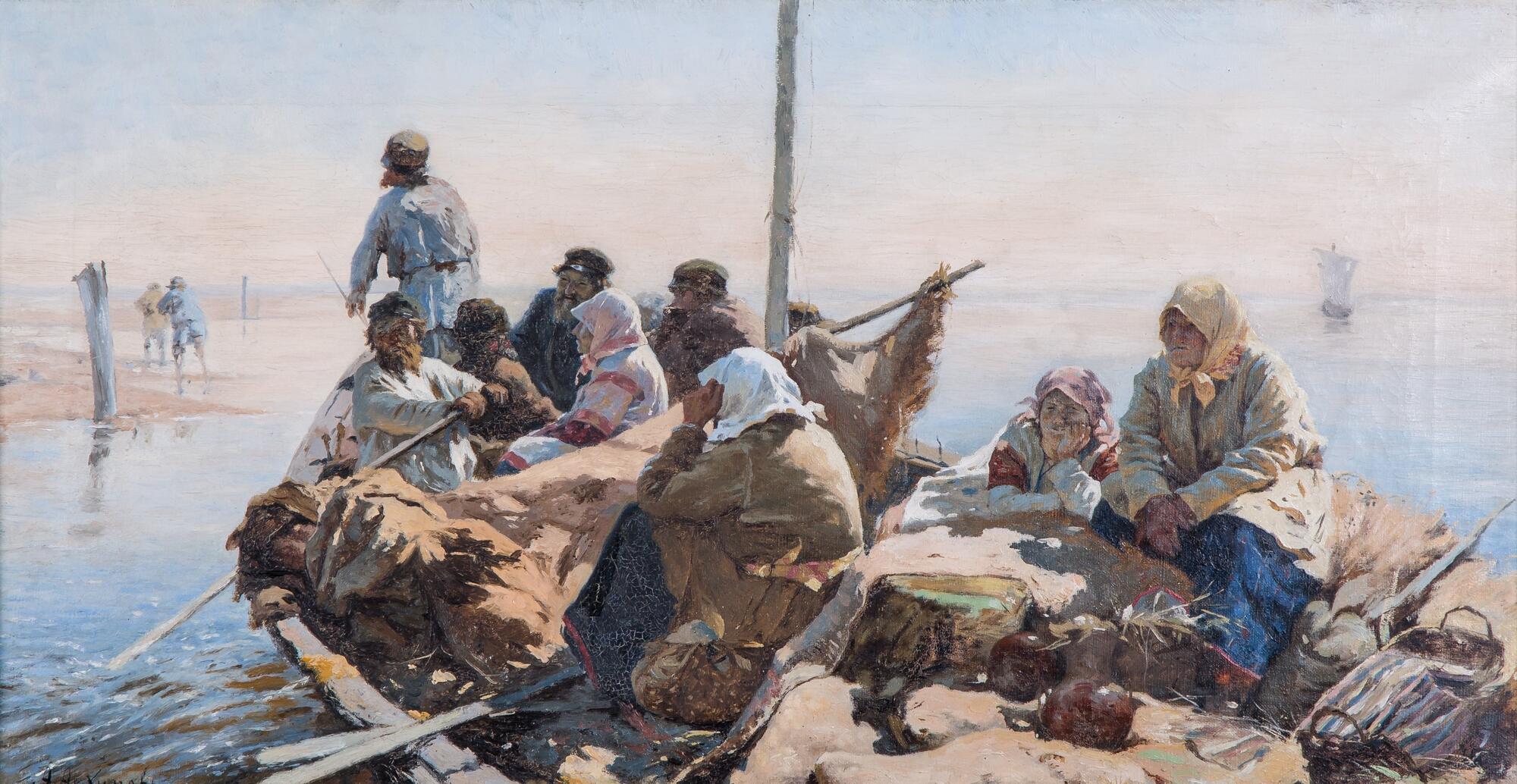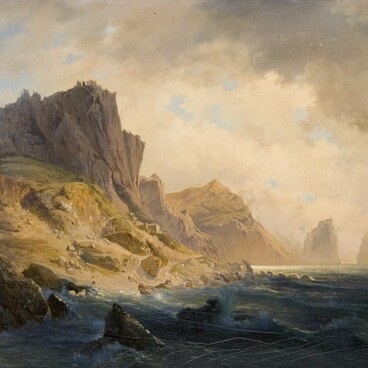The painting “Along the Oka River” by Abram Yefimovich Arkhipov (1862-1930) came to the museum from the Karacharovsky estate of the Counts Uvarov in 1918. It is an author’s replication of the painting, the first version of which is kept in the Tretyakov Gallery.
Abram Arkhipov was born in a peasant family in the Ryazan province. He became interested in drawing as a child. In 1877 he entered the Moscow School of Painting, Sculpture and Architecture. In 1884, after seven years of study in Moscow, he moved to the St. Petersburg Academy of Arts. In 1890, for the painting “Along the Oka River”, marked by great success with the public, he was accepted as a member of the Association of Traveling Art Exhibitions. The painting was appreciated by Pavel Tretyakov. While still in the artist’s studio, it was acquired by him, and was exhibited as the property of the gallery.
Arkhipov was called a singer of the Russian village, a painter of the genre art. The plot of the painting “Along the Oka River” was taken by him from real life. But the idea came after his trip with friends on the Volga river, where he made many sketches of similar episodes. The painting depicts a group of peasants in a wide boat, sailing along the river on a sunny day. The peasant women, tired and thoughtful, settled down on bags with meager belongings that filled the entire bottom of the boat. The painting is reliable, truthful and picturesque.
Arkhipov paid great attention to the color. The color palette of the peasants' clothes and the surrounding space is conveyed in restrained and muted colors. The midday heat and a light haze in the air above the water are clearly recreated by a well-chosen delicate golden colorful palette. Shadows fall vaguely, as happens during the heat, the water surface of the river stretches to the horizon.
The ratio of space and figures is striking. The author does not look at his characters from afar, but brings them closer to the viewer, he creates the impression of the artist presence in this boat.
The famous critic Vladimir Vasilyevich Stasov gave this picture a high rating: “The whole picture is painted right in the sun, it is felt at once… the people sitting on the barge, four women are magnificent.”
Among art lovers, the painting made a splash and had a huge success. It is not surprising that the author had to do replications. Probably, the Murom version was ordered to the artist by Countess Praskovya Sergeevna Uvarova and before the revolution was in the Karacharovsky estate.
Abram Arkhipov was born in a peasant family in the Ryazan province. He became interested in drawing as a child. In 1877 he entered the Moscow School of Painting, Sculpture and Architecture. In 1884, after seven years of study in Moscow, he moved to the St. Petersburg Academy of Arts. In 1890, for the painting “Along the Oka River”, marked by great success with the public, he was accepted as a member of the Association of Traveling Art Exhibitions. The painting was appreciated by Pavel Tretyakov. While still in the artist’s studio, it was acquired by him, and was exhibited as the property of the gallery.
Arkhipov was called a singer of the Russian village, a painter of the genre art. The plot of the painting “Along the Oka River” was taken by him from real life. But the idea came after his trip with friends on the Volga river, where he made many sketches of similar episodes. The painting depicts a group of peasants in a wide boat, sailing along the river on a sunny day. The peasant women, tired and thoughtful, settled down on bags with meager belongings that filled the entire bottom of the boat. The painting is reliable, truthful and picturesque.
Arkhipov paid great attention to the color. The color palette of the peasants' clothes and the surrounding space is conveyed in restrained and muted colors. The midday heat and a light haze in the air above the water are clearly recreated by a well-chosen delicate golden colorful palette. Shadows fall vaguely, as happens during the heat, the water surface of the river stretches to the horizon.
The ratio of space and figures is striking. The author does not look at his characters from afar, but brings them closer to the viewer, he creates the impression of the artist presence in this boat.
The famous critic Vladimir Vasilyevich Stasov gave this picture a high rating: “The whole picture is painted right in the sun, it is felt at once… the people sitting on the barge, four women are magnificent.”
Among art lovers, the painting made a splash and had a huge success. It is not surprising that the author had to do replications. Probably, the Murom version was ordered to the artist by Countess Praskovya Sergeevna Uvarova and before the revolution was in the Karacharovsky estate.



